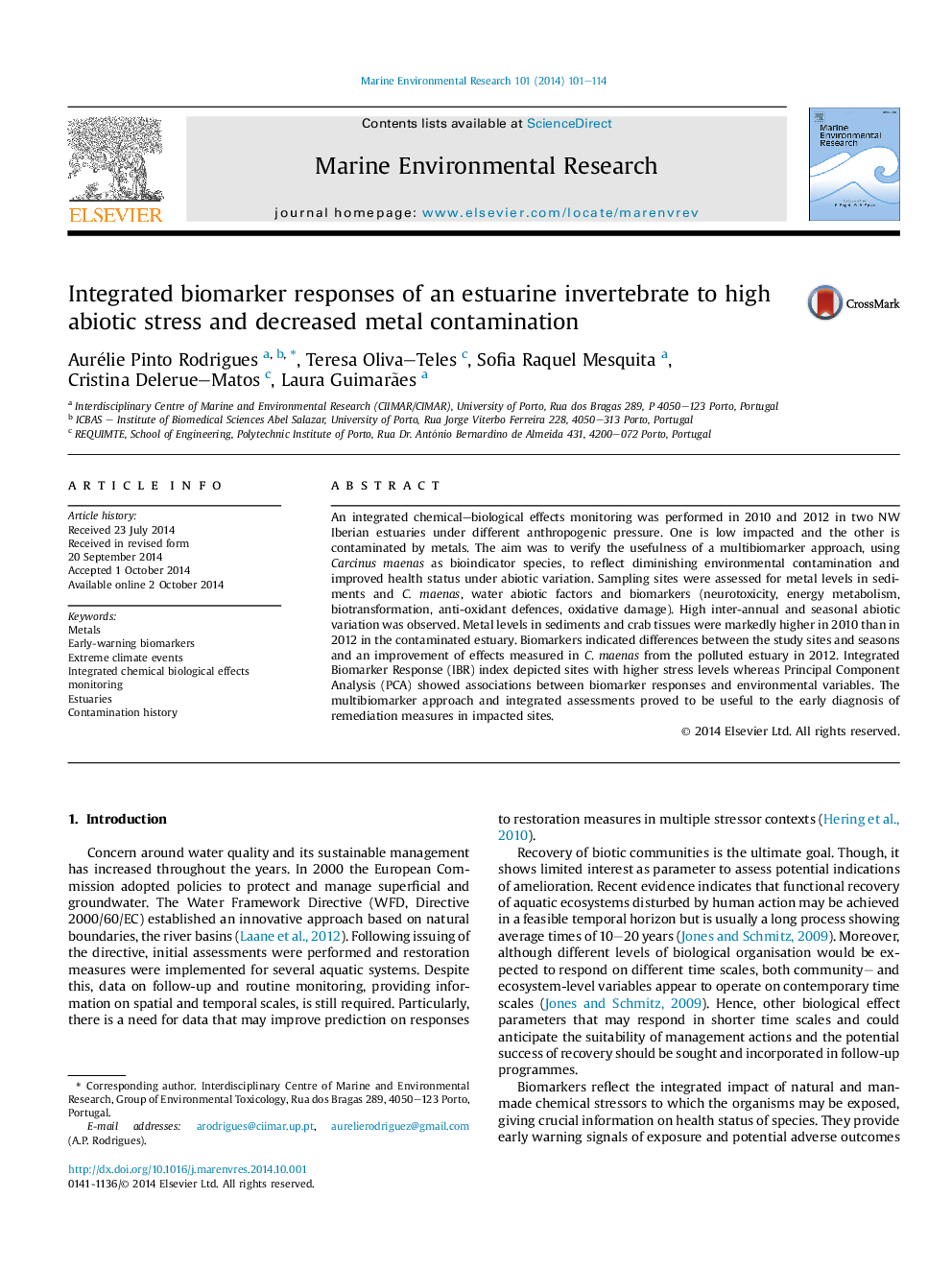| Article ID | Journal | Published Year | Pages | File Type |
|---|---|---|---|---|
| 4550748 | Marine Environmental Research | 2014 | 14 Pages |
•Two-year chemical–biological monitoring in estuaries with varying levels of metals.•Biochemical biomarkers reflected differences in environmental stress between sites.•An improvement on biochemical responses was observed from 2010 to 2012.•PCA indicated significant relationships between biomarkers and abiotic variables.•Multibiomarker approach potentially useful to diagnose remediation in impacted sites.
An integrated chemical–biological effects monitoring was performed in 2010 and 2012 in two NW Iberian estuaries under different anthropogenic pressure. One is low impacted and the other is contaminated by metals. The aim was to verify the usefulness of a multibiomarker approach, using Carcinus maenas as bioindicator species, to reflect diminishing environmental contamination and improved health status under abiotic variation. Sampling sites were assessed for metal levels in sediments and C. maenas, water abiotic factors and biomarkers (neurotoxicity, energy metabolism, biotransformation, anti-oxidant defences, oxidative damage). High inter-annual and seasonal abiotic variation was observed. Metal levels in sediments and crab tissues were markedly higher in 2010 than in 2012 in the contaminated estuary. Biomarkers indicated differences between the study sites and seasons and an improvement of effects measured in C. maenas from the polluted estuary in 2012. Integrated Biomarker Response (IBR) index depicted sites with higher stress levels whereas Principal Component Analysis (PCA) showed associations between biomarker responses and environmental variables. The multibiomarker approach and integrated assessments proved to be useful to the early diagnosis of remediation measures in impacted sites.
